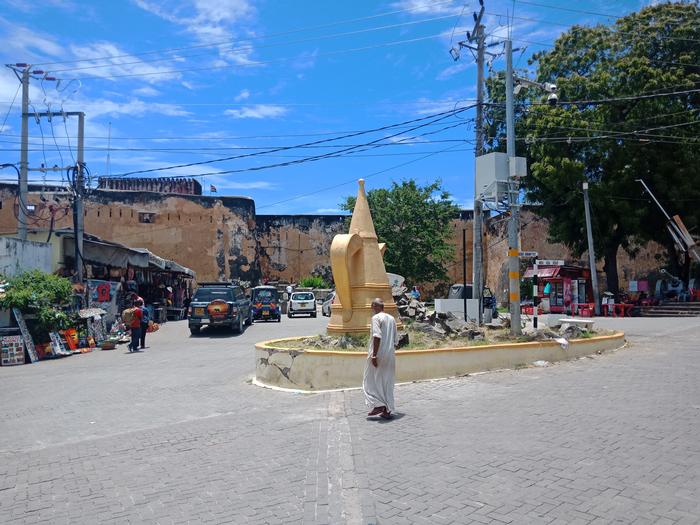Elizabeth Njeri Mugo and Stephanie Brenda Wanjiru Munene - ProposalFor the love of MuseumsOur partnership is necessitated by the fact that one party is a student Architect while the other is a student of law who has admirable experience in working in civic buildings during her internships within the country. A civic center is a prominent land area within a community that is constructed to be its focal point. The success of its architecture is defined by how people experience institutional values and collective aspirations. Museums as civic centers are an integral part of a well-balanced developmental strategy, lending attention to historical, socio-cultural, and political elements in each society. Culture is widely recognized as a critical aspect of quality of life and well-being of citizens. Fort Jesus Museum Fort Jesus Museum, was originally built as a military installation by the Portuguese between 1593-1596 after the designs of Italian Architect, Giovanni Battista Cairati. This famous landmark at the port city of Mombasa in Kenya, fortified the first Western domination over the Indian Ocean slave trade, by Portugal over Oman. The Fort's layout and form reflect the Renaissance ideal that perfect proportions and geometric harmony are to be found in the human body. The choice of location was very strategic as inhabitants had a pronounced vantage of the Indian Ocean, giving them an edge over invading enemies. The Swahili saying “Ngome intuumiza naswi tu mumo ngomeni” means ‘The Fort is hurting us yet we reside in it.’ This expression depicts the painful memories of the fort, given that it was used as a holding place for slaves. Consequently, some staff members feel ‘suffocated’ by the same walls that once enslaved their kin. The fort became a cultural haven hosting traditional events like dances and weddings, and this has gone a long way in changing its perception by the community. Interestingly, the fort appeals most to pupils with some describing it as majestic and grand. Communities found within the vicinity of the fort are pleased with the fort as their social and economic needs are being met. Community participation remains key to its sustainability. Nairobi National Museum The Nairobi National Museum was built in 1929 as a repository for Kenya’s cultural heritage. It is strategically located to the West of the city straddling a hillock and opposite the University of Nairobi whose scholars utilize its invaluable resources. The museum boasts of numerous collections including archeological findings of early man that have contributed to the scientific discourse of evolution. It also provides an ideal center for dialogue on current socio-political issues and the identification of national heroes. The design of the museum incorporates amphitheaters and open courtyards which significantly promote social activities. Triad architects, its designers, carefully struck a balance between traditional and modern contemporary architecture, albeit without compromising on integrity and authenticity of the building. Stakeholders from the European Union who were involved during its recent expansion and renovation described it as perfect assimilation of ancient and modern architecture. Some of the lessons to be learnt from this civic building include the importance of community involvement in the design process; integration of indigenous architecture with the modern; and the need for contextualization and use of both local materials and technology. Both museums contribute to the diversity and richness of our civilization in Kenya. In them, the artefacts of many native communities are conserved, preserved and researched upon. References “Why Culture Must be at the Heart of Sustainable Urban Development” by Nancy Duxbury, Jyoti Hosagrahar, and Jordi Pascual. Fort Jesus, Mombasa. Retrieved from https://whc.unesco.org/en/list/1295/
Additional Help and InformationAre you in need of assistance? Please email info@berkeleyprize.org. |
|


